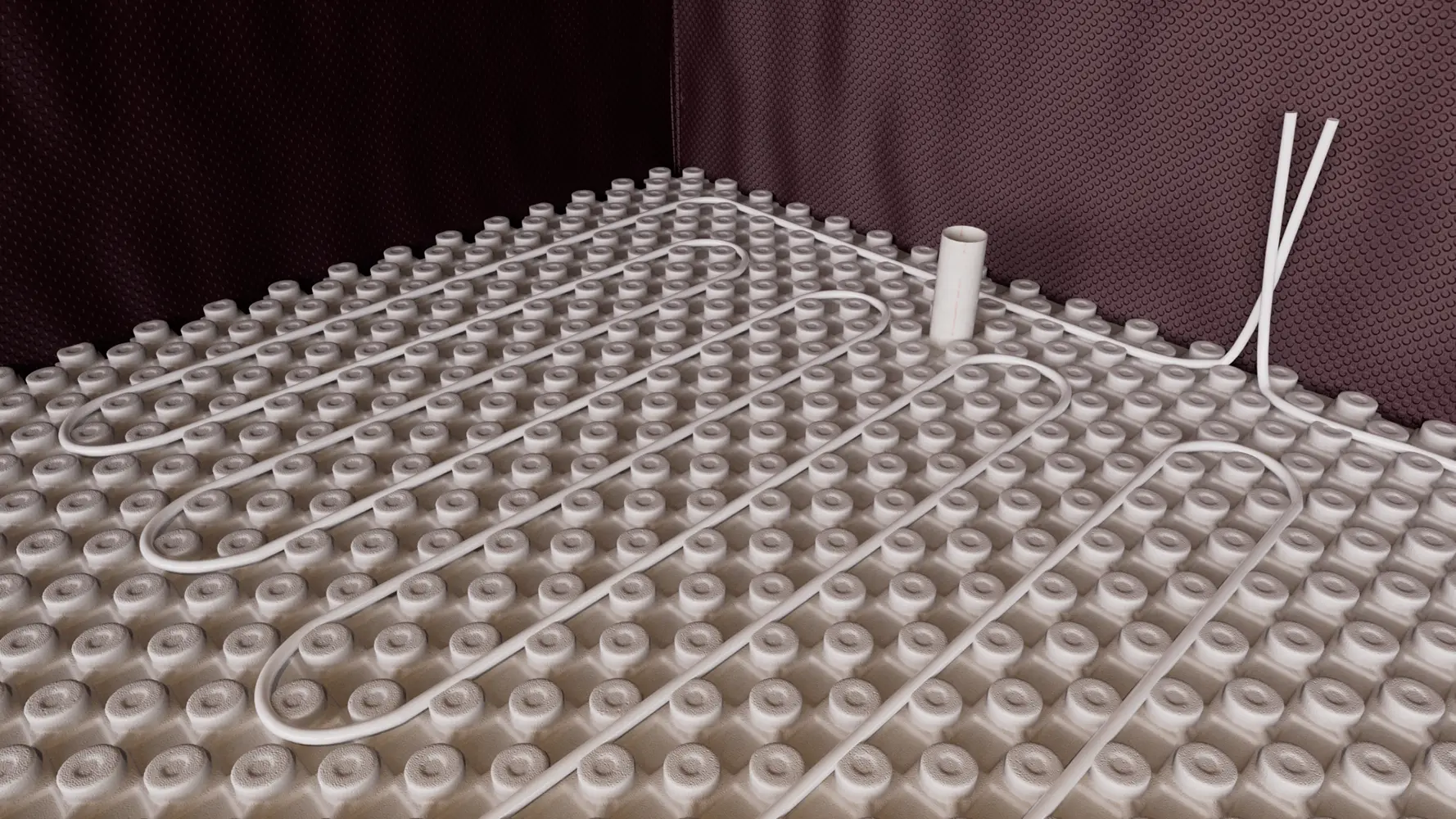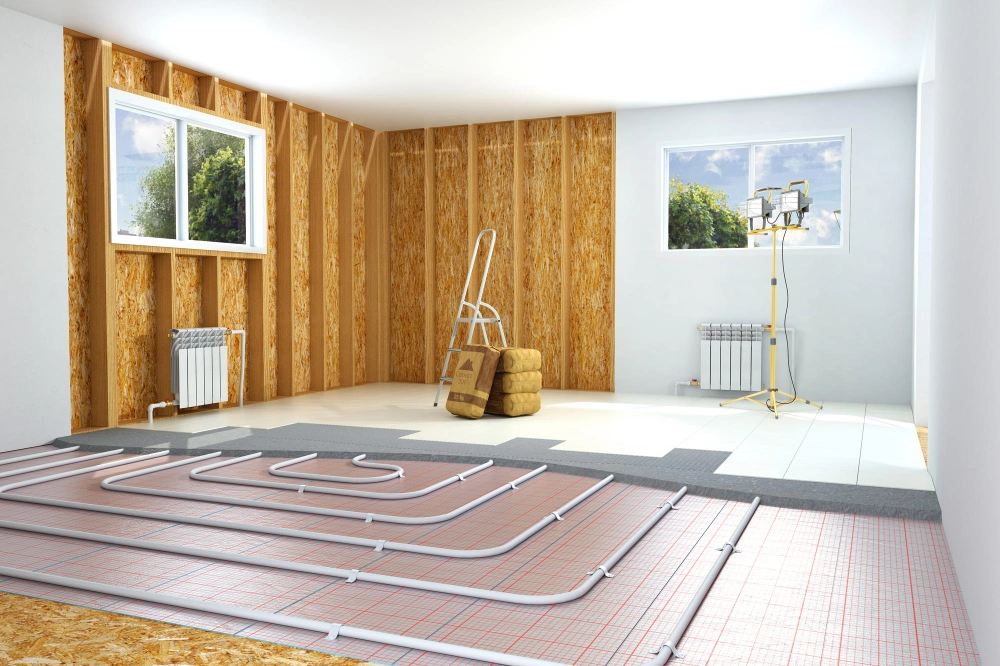Most homeowners don’t use their basement as a living space because it’s cold and damp. Most likely, for the same reason, you think it’s impossible to create additional useful space for your family, such as a recreation room or a gym. However, it is quite realistic to achieve this goal.
Let’s find out how to make the basement warmer and what it takes to make your stay in this room comfortable.
Understanding the Causes of Cold Basements
To understand how to warm up a cold basement, it is important to understand the causes of dampness and low temperature. Because cold air is heavier than warm air, it accumulates in the basement. The cold gets in through cracks in the walls and floor and through ventilation shafts with poor insulation.
Poor Insulation
An critical cause of cold in the basement is the lack of sufficient insulation. Air ducts made of thin aluminum or plastic do not provide even minimal insulation, letting the cold directly into the room. In the winter, this can be a big problem. Especially if the basement is less insulated than the rest of the house.
Lack of Heating
A common cause of a cold basement is a lack of heating in the basement. Even when the room is insulated and all cracks are removed, it is impossible to reach the right temperature without heating devices. Especially in the coldest periods.
How to keep basement warm in winter? It is essential to use a heating source. It does not matter whether it is an underfloor heating system or a small portable heater.
Moisture and Humidity
Finally, basements are usually quite damp. This can be caused by cracks in the foundation or wall areas or condensation that has been collected inside the room.
In a damp room, the air feels colder than it really is. This phenomenon changes the “feel” of heat. Even when the air is at a normal temperature, it will still feel cooler.
Thus, how to keep basement warm? The key is to reduce heat loss and limit the cold from entering the room. We will talk more about the recommended actions below.
How to Keep a Basement Warm
By eliminating all of the above causes of cold getting in, you will be able to make your basement comfortable to use. In addition, this comprehensive approach will help you avoid high maintenance costs.
Seal Gas and Cracks in the Basement Structure
Most basements have small cracks or air gaps in the door, wall, or foundation areas. These holes are not easy to notice, but they cause significant heat loss.
How to warm up basement? First and foremost, thoroughly check all of the above areas. If you find cracks, be sure to seal them up and have foundation repair Toronto performed.
Enhance Insulation
Let’s remember that cold air tends to sink in. If your basement walls aren’t insulated, they will conduct cold air inside.
How to warm up a basement in this case? Order an insulation service as well as waterproofing basement walls Toronto to normalize the temperature and humidity regime.
Replace Old Windows and Doors with Energy-Efficient Alternatives
Any window and door design can provide basic protection from heat loss. But their energy efficiency will differ dramatically. Replacing old doors and windows with energy-efficient ones will not only reduce heat loss, but also energy costs for heating.
Use Carpets or Area Rugs for Added Warmth
How to make basement warmer in winter without spending too much and without complicated manipulations? Cover the cold floors of your basement with a carpet, for example.
It will provide a little “floor insulation”, reducing heat transfer through the uninsulated floor. Of course, it will not eliminate heat loss completely, but your feet will definitely feel more comfortable.
Install Vents in the Basement
If your basement is not well-ventilated, the best solution is to extend the existing duct system in the house to it.
Keep in mind that cheap plastic door vents are ineffective. They will let in cold air, so you should not use them for vents.
Implement Floor Heating Solutions
Floor platform framing elements such as rim joists and lintels rest on cold concrete foundations. This causes significant heat loss.
When there is no way to solve this problem, one effective cold basement solution is a floor heating system. By investing in an underfloor heating system, you can make your basement much warmer.
Consider an Additional Heating Unit
Install an additional heater or electric fireplace. Another heat source allows you to warm the space to a comfortable temperature.
Do not start supplemental basement heating until all heat loss has been eliminated. Otherwise, the added heat sources will cause unnecessary costs.
Utilize a Space Heater
How to make my basement warmer if the basement doesn’t get as much heat as the rest of the house? If you are concerned about this issue, choose electric space heaters for short-term heating.
More efficient for this purpose, appliances with a combustion process. But be prepared that they cost more than electric heaters and require sufficient ventilation.
Keep Your Basement Warm with Help from Quality Age Build
How to make your basement warmer without making a lot of effort or spending money on methods that don’t completely solve the problem?
Leave the task to us – we will make your basement warm and comfortable to live in. Many years of experience allow us to guarantee the high quality of our work.

Conclusion
A basement is great for expanding your living space. But how to keep basement warm? Without eliminating the source of cold air, up to 40 percent of the energy intended for heating will simply be wasted.
It is best to insulate your basement in autumn or winter. This is when temperature spikes are at their highest and will be more visible on a thermal imaging camera.
Contact us
Quality Age Build Inc is at your service across the GTA. Request a quote today and ensure your property is in expert hands.
Related Services
Pair our expert guidance with our waterproofing solutions to eliminate leaks, control moisture, and keep your basement dry and healthy.
FAQs
What's the most cost-effective way to warm up a basement?
Seal, insulate, and raise the temperature. You can do this with a space heater or underfloor heating.
How much does it cost to warm up a basement?
It all depends on the amount of work you need to do to insulate the basement of your home.
What's the ideal basement temperature in winter?
The ideal temperature is the temperature that is comfortable for you.

